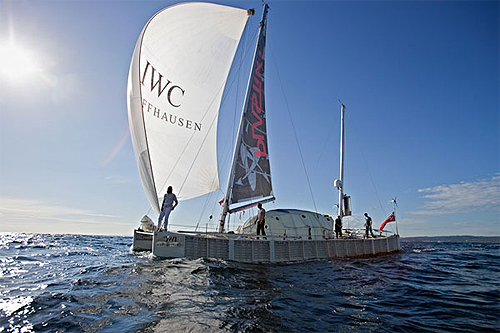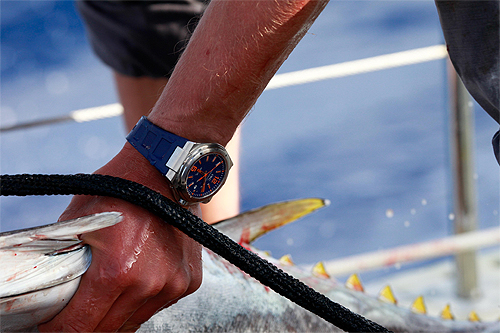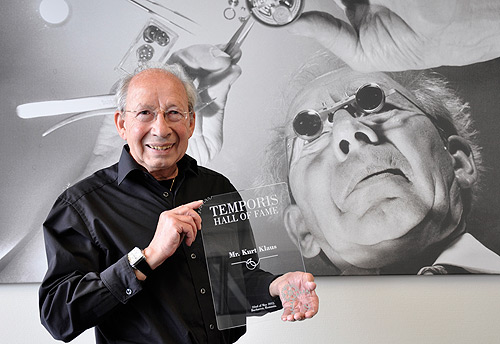
8300 nautical miles
129 days
3083 hours on sea
What an amazing journey! Inspired by the great voyage of Kon Tiki, David de Rothschild and his team crossed the Pacific ocean in March 2010. sailing on a catamaran made of 12,500 plastic soda bottles!
While the design and build of the boat - made out of recycled plastic - presented a great engineering challenge in itself, this group of enthusiastic ecologists wanted to bring the attention of the world to a serious issue: the world's oceans are in serious threat from pollution, particularly from plastic waste.
The Pacific Ocean alone is polluted with 100 million tons of floating man-made trash, mostly plastic. The PLASTIKI message is simple: not just recycle, but rethink!

The official sponsor of the Plastiki project was IWC. To their credit, IWC is one of few Swiss watch manufacturers who are serious about the environment (Make sure to visit the IWC website for more details!).
With project Plastiki, IWC decided to take the partnership opportunity to produce a very unique, truly limited watch: the Ingenieur Automatic Mission Earth Edition “Adventure Ecology” in platinum. Total production run: 1 piece! IWC has donated the entire proceeds of the highest bid - 30,800 Euros - to “Sculpt the Future Foundation” as a way of paying tribute to the successful Plastiki expedition.
For the rest of us, IWC produced a limited run Ingenieur Automatic Mission Earth Edition of 1000 pieces.

The "Plastiki" is an impressive well-built, smart looking watch. Make no mistake: this is not a watch built for a Tom Cruise size man! It is built for a sportsman who enjoys quality engineering and precision "packed" in an admirable sized case. The strong and eye-catching colour scheme (navy-blue / orange) makes this IWC Ingenieur a perfect tool-watch at both sea, land and in the office!
The IWC Ingenieur is a 'must have in Sydney' watch - the obvious connection to Plastiki project and its San Francisco-Sydney voyage is just another great reason to add it to your collection.
What a great conversation piece: take it off your wrist and tell its story: while your guest may envy the size of your yacht, they'll surely admire your new-found love for the environment too :-) Our own Plastiki Ref IW3236-03 is fitted with original IWC bracelet (special order to IWC by it's previous owner. For more details, see clockmaker.com.au/w/k3316.html

[Image source: ThePlastiki.com]






